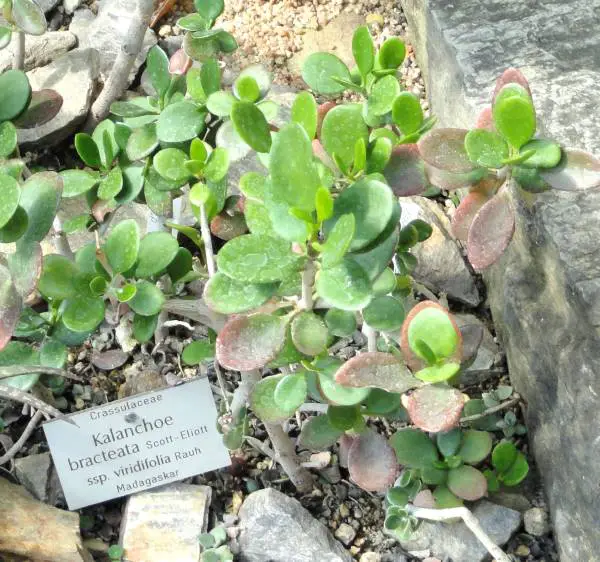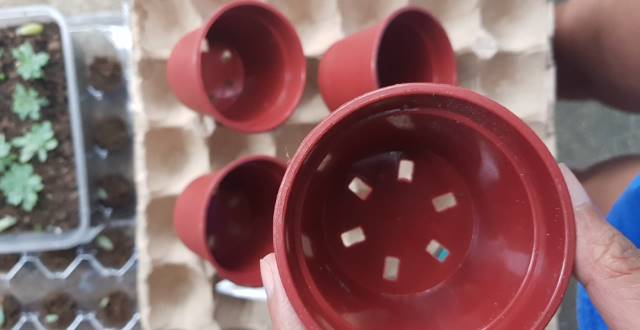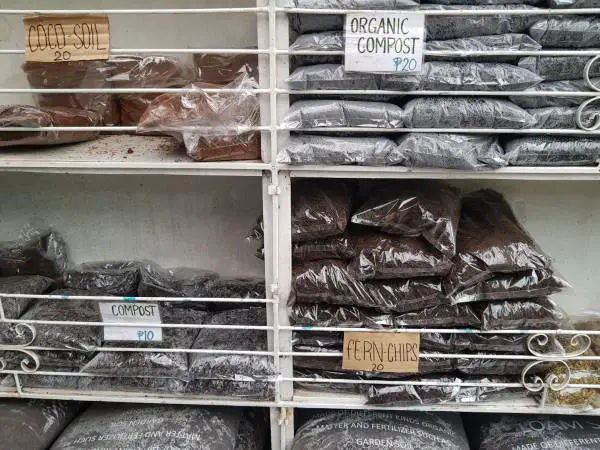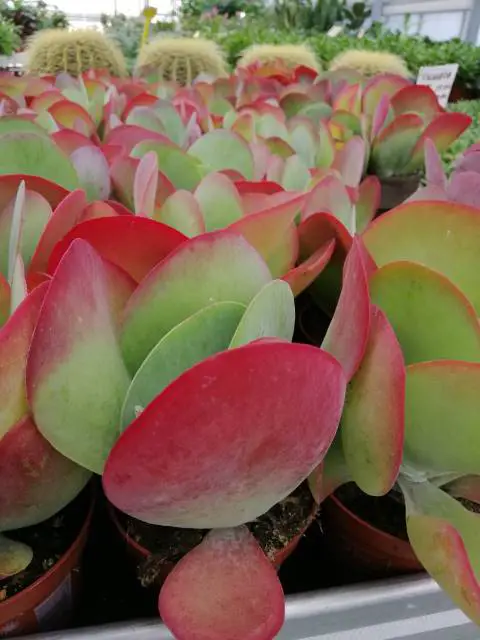Do you want a houseplant with a unique appearance? Kalanchoe bracteata is the right choice for you. This succulent has a unique appearance due to its silvery grey hue.
Kalanchoe bracteata is a compact, small, and shrubby, succulent with pointed silvery pubescent leaves. It belongs to the family Crassulaceae. The plant has minimal care requirements and can be easily grown as a houseplant. No matter if you are a beginner or an expert grower you can easily grow Kalanchoe bracteata.
Common Name: Silver Teaspoons
Synonyms: Kalanchoe nadayae, Kalanchoe bracteata var. bracteata
Origin
Silver Teaspoons is originated from South Eastern Madagascar and Comoros.
Characteristics
Kalanchoe bracteata is a small succulent that grows up to 4 feet (1.2 m) tall. It has ovate leaves that are 2 inches (5 cm) long and slightly pointed at the tips. The leaves are held opposite to each other. The succulent has a silvery pubescence, and some varieties of silver teaspoons have smooth-textured leaves. This succulent is highly rewarding for its beautiful colorful flowers.

Blooming season
The succulent blooms in spring and summer seasons by giving off orange-red cruciform flowers on the panicles.
How Kalanchoe bracteata is different from Kalanchoe orygalis and Kalanchoe hilderbrandtii?
Kalanchoe bracteata, Kalanchoe orygalis, and Kalanchoe hildebrandtii are similar-looking species and can be easily confused with each other. Kalanchoe bracteata and Kalanchoe orygalis have a more close resemblance.

They can be distinguished by their flowers. Kalanchoe orygalis have yellow flowers with greenish lobes while Kalanchoe bracteata have red or orange-red flowers. The pubescence of Kalanchoe bracteata can be identified by its 3 angled 2 lobed hair. Kalanchoe hildebrandtii is another closely resembling species that can be differentiated by its small white blooms and stalkless leaves.
How to Grow and Care for Kalanchoe bracteata?
Kalanchoe bracteata is a very undemanding succulent with minimal care requirements.
Lighting
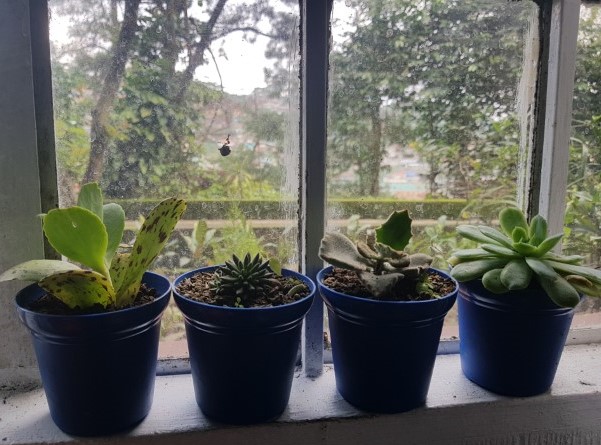
Silver teaspoons prefer to grow at bright, sunny locations. Place the containers at the partial sun to light shady locations. Indoor plants can be kept near a sunny window. Avoid exposure to direct and intense sunlight. It may cause the burning of leaves or leaf tips.
Temperature and Humidity
Kalanchoe bracteata loves to thrive at warm temperatures. Though it is quite a winter hardy succulent, it cannot survive if the temperature drops below 55-degree Fahrenheit (13 degrees Celsius). In areas where the temperature is extremely cold, the succulents must be protected from freezing damage. Container plants should be moved indoors, and the outdoor plants should be covered with frost cloths. Kalanchoe bracteata does not require specific humidity to grow. It grows fairly well at all levels of humidity.
USDA hardiness zones
Kalanchoe bracteata can be grown as a hardy succulent in USDA hardiness zones 9b to 11b (25 to 50-degree Fahrenheit)
Potting Soil
A standard succulent soil mix will work fine for growing Kalanchoe bracteata. Or you can prepare the soil medium on your own by mixing 40 to 50% sand with clay and peat moss. Ensure that the soil medium has good drainage potential.
Kalanchoe bracteata Watering
Watering is the most critical step in plant care. Kalanchoe bracteata is a drought smart plant. It requires moderate watering and should be allowed to dry between watering
You must be very careful while watering because Kalanchoe bracteata is extremely sensitive to overwatering. Overwatering can cause root decay and rotting and encourages fungal growth. Also, do not leave these succulents dry for very long because the leaves will start showing water distress.
Fertilization
Kalanchoe bracteata does not need fertilization. The succulent enjoys plenty of nutrients from the soil medium and grows fine. However, if you want to make your succulents grow even healthier and lush you can fertilize them to give an extra dose of nutrients. Feed your succulents fortnightly or monthly with liquid fertilizer or you can also use slow-release pellets.
Propagation
Kalanchoe bracteata can be easily propagated by stem and leaf cuttings. The propagation process is simple. Just snip off the plant part you want to use for propagation with a clean scissor and let it callous for a couple of days at a warm dry place.

Place the cuttings on the top of the soil medium and keep misting 5 to 6 times a day for the first few days. Avoid exposure to direct sunlight. Once the succulent starts rooting and establishes in the soil, resume the normal watering and light regimes as required by a full-grown succulent.
Pruning
Silver teaspoons is a small-sized Kalanchoe that does not need frequent pruning. But you can prune to shape as desired. You can also remove the dead leaves or spent blooms to encourage new and healthy growth in the next season.
Repotting
Kalanchoe bracteata does not have to be repotted frequently. The container plants may need repotting to replace the old soil medium with a fresh and fertile soil medium. Generally, Kalanchoe succulents should be repotted every 2 years. However, take extra care while repotting because this succulent has brittle leaves and can snap easily due to mishandling.
Which pots are good for growing Kalanchoe bracteata?
You can grow your succulents in clay pots, and glazed ceramics containers. Make sure the containers have good drainage.
Problems and pests
Aphids and mealybugs can be occasionally seen attacking the houseplants. The plant can be saved from the attack of insect pests by rubbing the leaves and stems with 70% isopropyl alcohol. A neem oil spray or a recommended nontoxic insecticidal spray will also keep the insects away.
Overwatering is another big problem of Kalanchoe bracteata. The succulent is highly sensitive to overwatering which causes root decay. Always let the excess water drain before applying the next water.
Is Kalanchoe bracteata toxic or not?
Kalanchoe bracteata is mildly toxic to pet cats, and dogs. Though Kalanchoe bracteata is safe to humans, it should be kept away from the reach of children.
Uses
Kalanchoe bracteata makes a perfect display in combination with plants having dark foliage. It looks great in pots or as a small border hedge in dry or succulent gardens. It is also a great choice for cactus and succulent gardens in frost-free locations.

